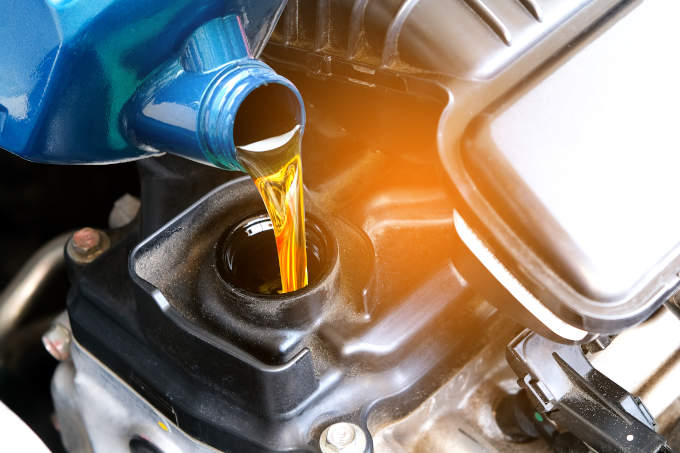Hey there, fellow car fanatic! Let us introduce you to the unsung hero of your vehicle's silky-smooth performance - transmission fluid. Without this hard-working liquid, your car's gears would grind and clash, leading to costly damage. But with transmission fluid on the job, you can enjoy seamless shifting and a happier wallet. Intrigued? Read on!
Transmission fluid is like the lifeblood of your car's transmission system. It lubricates, cools, and protects all those intricate moving parts, ensuring they work together in perfect harmony. Without it, your transmission would quickly overheat and fail, leaving you stranded on the side of the road.
The Critical Role of Transmission Fluid in Your Vehicle
Transmission fluid is the unsung hero of your car's drivetrain. It's the lifeblood that keeps your transmission running smoothly, ensuring reliable performance and longevity. Without it, your gears would grind to a halt faster than a drag race on a dirt road.
But here's the thing - most folks don't give their transmission fluid a second thought until there's a problem. And by then, it's often too late. That's why it's crucial to understand the vital role transmission fluid plays in your vehicle's health.
Understanding Transmission Fluid and Its Functions
So, what exactly is transmission fluid? In a nutshell, it's a specialized lubricant designed to keep your car's transmission gears and clutch packs operating smoothly. It's formulated to handle the intense heat and pressure inside your transmission, preventing wear and tear on those expensive components.
There are a few different types of transmission fluid, depending on whether you have an automatic or manual transmission. Automatic transmission fluid is typically lighter in viscosity and contains additives to help with shift quality and torque converter performance. Manual transmission fluid, on the other hand, is thicker and designed to lubricate gears and bearings.
Regardless of the type, transmission fluid serves a few key functions:
- Lubricates moving parts to reduce friction and wear
- Cools the transmission by absorbing and dissipating heat
- Helps maintain hydraulic pressure for smooth shifting
- Protects against corrosion and rust
Imagine your car's transmission as a high-performance athlete. To keep it in top shape, it needs the right fuel – and that fuel is clean, fresh transmission fluid. Without it, your transmission will quickly become exhausted, overheat, and give out. Be proactive and monitor your fluid level and condition to avoid a catastrophic breakdown.
Signs Your Transmission Fluid Needs Attention
So, how do you know if your transmission fluid needs some love? There are a few telltale signs to watch out for:
Identifying Transmission Fluid Leak Color
One of the most obvious signs of a transmission fluid issue is a leak. If you spot a puddle of reddish fluid under your car, it's likely transmission fluid. But did you know the color of the fluid can actually tell you a lot about the health of your transmission?
Fresh transmission fluid is typically bright red or pink in color. If the fluid looks dark brown or black, it's a sign that it's old and needs to be changed. And if the fluid has a burnt smell or contains metal particles, it could indicate more serious damage to your transmission.
How to Check and Maintain Your Transmission Fluid Level
Checking your transmission fluid level is a simple task that can prevent major issues in the future. Locate the dipstick near your transmission and check the fluid level and condition to ensure your car stays in top shape.
Transmission fluid is like the lifeblood of your car's gears. To make sure it's in tip-top shape, follow these quick and easy steps to check it.
Note: Some modern transmissions lack readily accessible dipsticks, requiring professional service for maintenance. This contrasts with earlier times when checking and changing transmission fluid was as straightforward as changing the oil.
- Park your car on a level surface and let the engine run until it reaches normal operating temperature.
- Locate the transmission dipstick (consult your owner's manual if you're not sure where it is).
- Pull out the dipstick, wipe it clean with a lint-free cloth, then reinsert it fully.
- Pull the dipstick out again and check the fluid level. It should be between the "full" and "low" marks on the dipstick.
- Note the color and smell of the fluid. If it's dark, smells burnt, or contains debris, it's time for a change.
It's important to use the correct type of transmission fluid for your vehicle, as specified in your owner's manual. Using the wrong fluid can cause shifting problems and even damage your transmission.
The Impact of Old Transmission Fluid on Vehicle Performance
Imagine your transmission fluid as the lifeblood of your vehicle's gearbox. When you neglect to change it, the fluid breaks down, becoming tainted with metal particles, clutch material, and other contaminants. This can lead to a variety of transmission issues that can leave you stranded and your wallet empty.
- Reduced lubrication, causing increased friction and wear on gears and bearings
- Overheating due to reduced cooling efficiency
- Poor shift quality, including slipping, jerking, or delayed shifts
- Reduced fuel efficiency as the transmission works harder to compensate for worn parts
- Increased risk of transmission failure, which can be expensive to repair
In short, neglecting your transmission fluid is a surefire way to end up stranded on the side of the road with a hefty repair bill. Don't let it happen to you.
DIY vs. Professional Transmission Fluid Change
So, you've determined that your transmission fluid needs to be changed. Should you do it yourself or leave it to the pros?
Changing your own transmission fluid can be a messy and time-consuming job, but it is possible with the right tools and knowledge. You'll need a fluid pump, a catch pan, and the correct type and amount of fluid for your vehicle. You'll also need to properly dispose of the old fluid, as it can be harmful to the environment.
That said, there are some advantages to having a professional change your transmission fluid:
- They have the proper equipment and expertise to do the job quickly and correctly
- They can spot potential problems with your transmission during the service
- They'll properly dispose of the old fluid for you
- They may offer a warranty on their work
Deciding between a DIY fix or professional service for your vehicle ultimately depends on a few key factors. Consider your mechanical know-how, the tools at your disposal, and the size of your wallet. If you're feeling unsure about tackling the problem yourself, it's usually wiser to trust the trained technicians to get the job done right.
Choosing the Right Type of Transmission Fluid for Your Vehicle
As we mentioned earlier, using the correct type of transmission fluid is crucial for the health of your transmission. But with so many different types and brands on the market, how do you know which one to choose?
The best place to start is your vehicle's owner's manual. It will specify the exact type of fluid your transmission requires, as well as the recommended change interval. It's important to follow these manufacturer recommendations to ensure optimal performance and longevity.
Not sure which transmission fluid is right for your ride? Chat with a reliable mechanic or transmission expert. They know their stuff and can recommend the perfect fluid to keep your car running smoothly, no matter where the road takes you.
Preventive Measures to Avoid Transmission Problems
The best way to avoid transmission problems is to take a proactive approach to maintenance. Here are a few tips to keep your transmission in top shape:
- Check your transmission fluid level and condition regularly (at least once a month)
- Have your transmission serviced according to the manufacturer's recommended schedule
- Avoid overloading your vehicle or towing beyond its rated capacity
- Let your vehicle warm up before driving, especially in cold weather
- Use the correct gear for the driving conditions (e.g. use a lower gear when climbing hills)
- Avoid shifting into reverse or park while the vehicle is still moving
Want to steer clear of costly repairs? Follow these simple tips to maintain fresh, clean transmission fluid and enjoy a smooth-running vehicle for the long haul.
Key Takeaway:
Keep your car's transmission in top shape by regularly checking and changing the fluid. It prevents wear, overheating, and costly repairs. Use the right type for your vehicle to avoid shifting issues.
So there you have it - the lowdown on transmission fluid, your car's secret weapon for smooth sailing. By understanding its vital role and keeping an eye on its condition, you can help your vehicle stay in tip-top shape for miles to come.
Remember, a little TLC goes a long way when it comes to transmission health. Regular checks, timely changes, and using the right type of fluid can save you from expensive repairs down the road. Your car will thank you!
With this knowledge under your belt, you're ready to take the wheel and keep your car running like a dream. Here's to many miles of smooth, trouble-free driving!

 Schedule Appointment
Schedule Appointment















